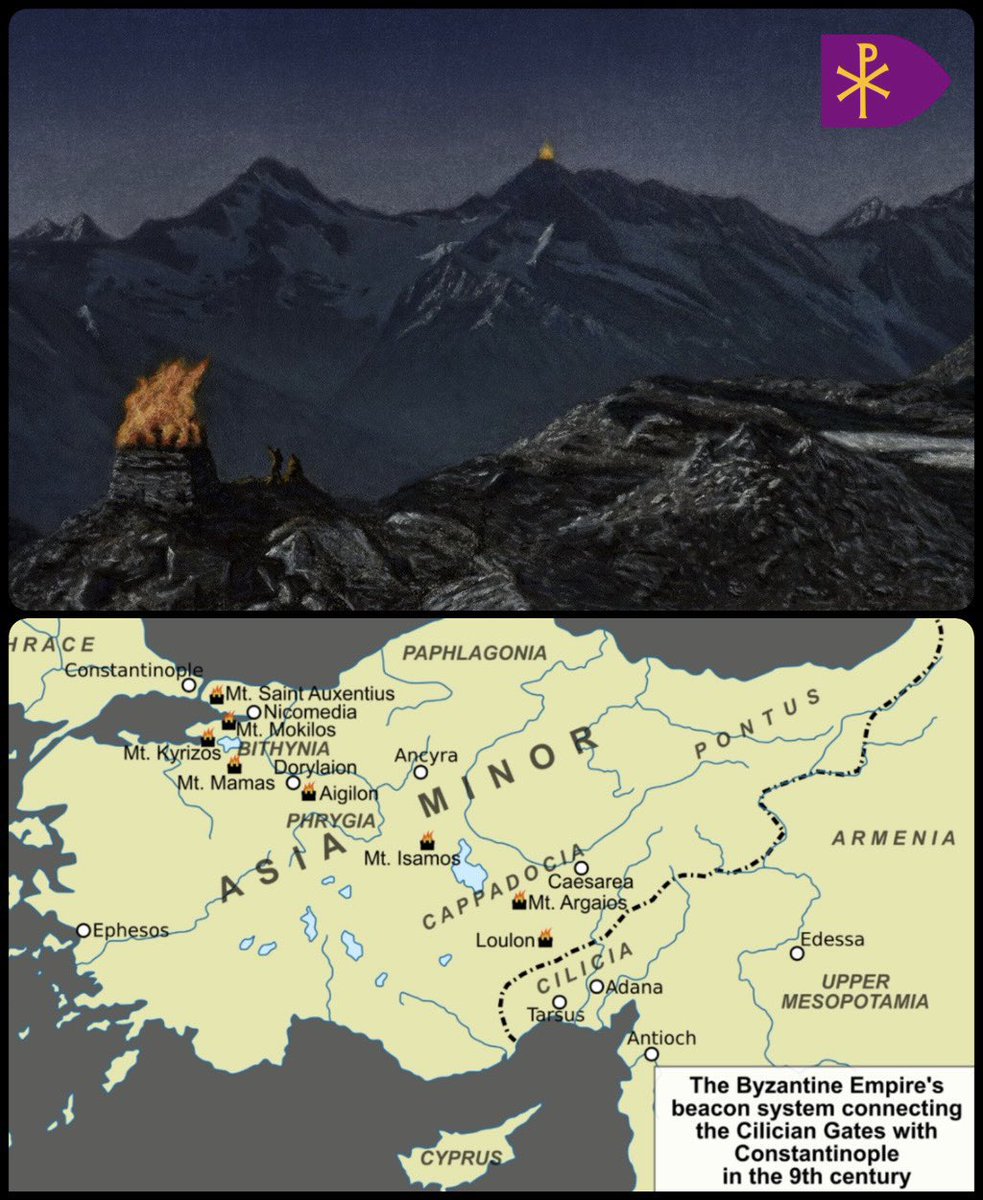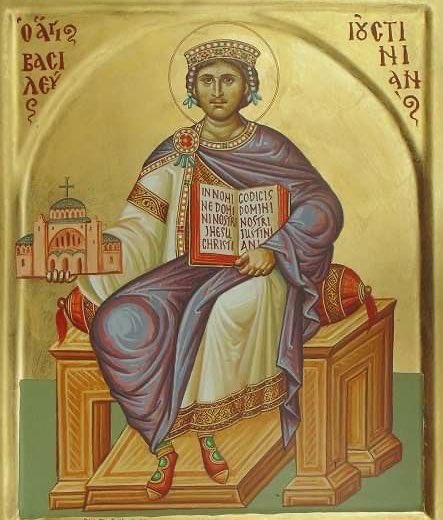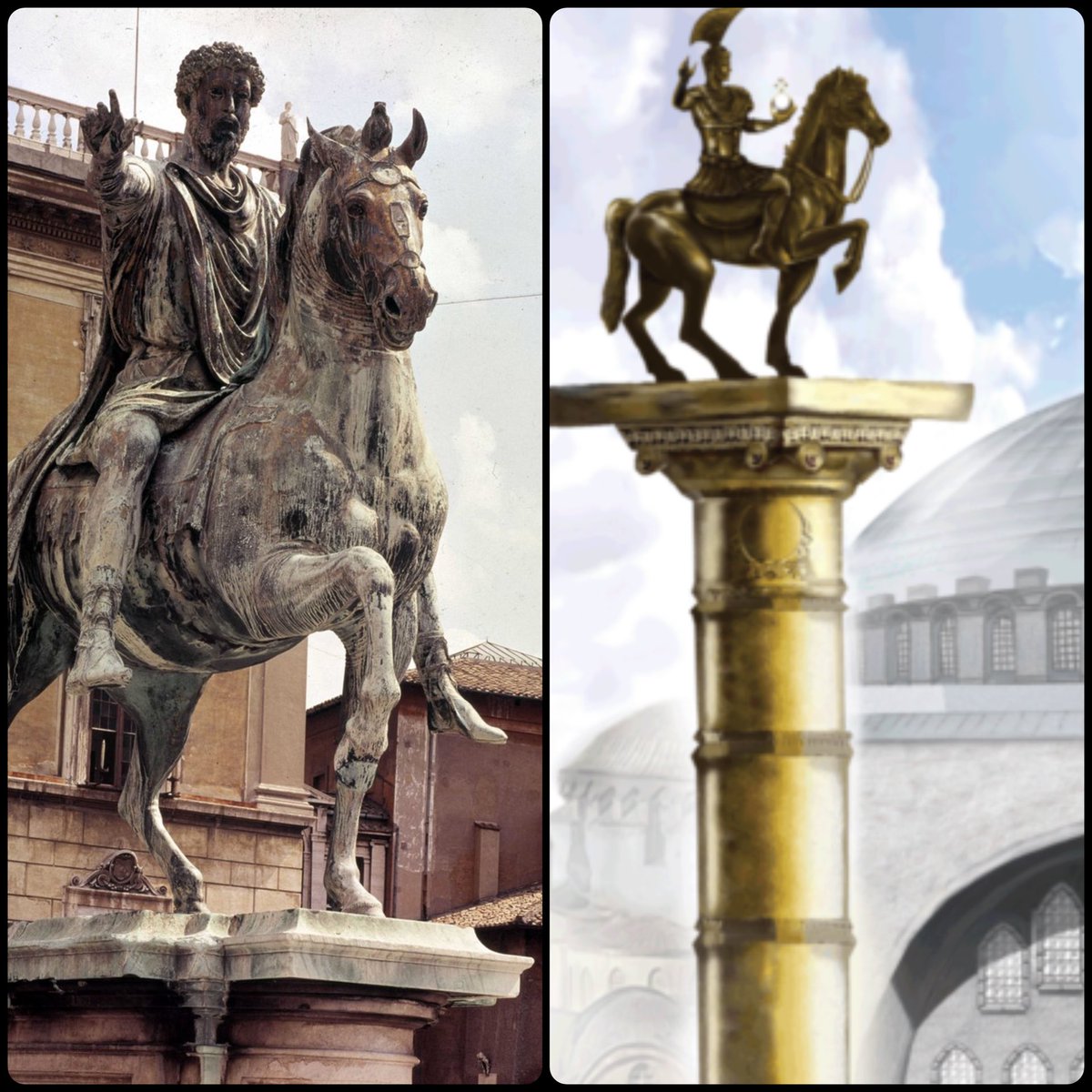THE BEACONS ARE LIT! ANATOLIA CALLS FOR AID!
During the 9th century the Eastern Roman Empire deployed a beacon system allowing it to send warnings of danger from the border with the Arabs to Constantinople in rapid time.
How did this “Lord of the Rings” style system work?
🧵🧵
During the 9th century the Eastern Roman Empire deployed a beacon system allowing it to send warnings of danger from the border with the Arabs to Constantinople in rapid time.
How did this “Lord of the Rings” style system work?
🧵🧵

This system was likely “created by Leo the Mathematician, who devised a code for the interpretation of signals, and had two identical water clocks made for the terminal stations. His work took account of the difference in longitude and the time the signal needed for transmission” 

“Signals were flashed from Loulon north of the Cilician Gates, where the Arabs would be first observed, to Argos on the Hasan Dag in Cappadocia, thence by a series of unidentified stations to Mokilos above Pylai, then to Mt. Auxentios and the imperial palace… about 450 miles.” 

“Modern experiments suggest that one hour would suffice for the entire distance. The beacons consisted of huge bonfires on platforms or towers within fortifications on isolated hills; two have been identified at Loulon and Argos.” 

In the open terrain of central Asia Minor, the beacon stations were able to be over 60 miles apart. However, in the more rugged country of the northwest with less visibility the average distance was about 35 miles.
Smaller sub-lines of beacons alerted areas off the main line!
Smaller sub-lines of beacons alerted areas off the main line!

“The system was curtailed or modified by Michael III, whose victories reduced the necessity for it.”
However, “remains of a beacon station near Kotyaion indicate that the system was revived by Manuel I Komnenos” in the 12th century, for the frontier with the Seljuk Turks.
However, “remains of a beacon station near Kotyaion indicate that the system was revived by Manuel I Komnenos” in the 12th century, for the frontier with the Seljuk Turks.

Source: The Oxford Dictionary of Byzantium by Alexander Kazhdan
• • •
Missing some Tweet in this thread? You can try to
force a refresh





















